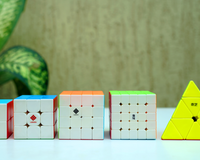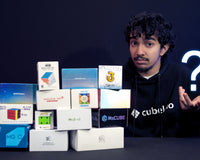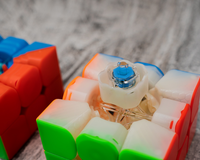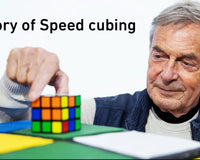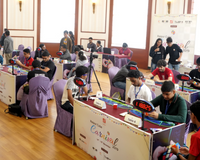When you reach a certain point in your 3x3 speedcubing times, you might hit a barrier. Some common ones are sub-20, sub-15, sub-10 etc. and besides focused practice, building up a different variety of skills is something that can be very useful. The other 17 WCA events are a mixture of various puzzles and challenges, like megaminx, 5x5, and 3x3 blindfolded, and practicing those can actually help you accomplish this.

Carryover
The central concept here is the idea of carryover. Different events require different skills, obviously. But there are events where skill sets can overlap, and you find yourself better off in one event because you learnt something doing another event. This is commonly known as carryover, as the skills you learn in one event carryover to another. Now, we can look at the possibility for carryover in the case of 3x3 specifically.
3x3 One Handed
3x3 One-Handed (3x3 OH) is perhaps the most related to regular speedsolving, where you solve the cube mostly the same way but with only one hand. This makes it the obvious choice for the most skill overlap. So, what is unique about the skill set of 3x3 OH? The answer is finger tricks.
Bear with me here, because this might get a bit technical. Assuming you are right-handed and hence, do OH solves with your left hand, your focus during regular solves is mostly your right hand finger tricks. R, U, and D moves with your index and ring fingers, and double flicks with your index and middle finger. In 3x3 OH however, you learn to do that with your left hand.

One finger trick that I had to develop while learning OH that proved infinitely useful during my regular 3x3 solves, was the left handed index flick. I use this when I have to do a U move immediately after an R move that displaces my thumb from the front face. Its 3x3 counterpart is where you pinch your index finger and thumb together to drag the U face clockwise. This is extremely useful, especially in algorithms like T perm and J perm, as well as provides an easier finger trick option when you’re in trouble.
3x3 Fewest Moves
The second event I want to touch on is 3x3 FMC. The Fewest Moves Challenge requires more knowledge of the cube, its pieces, and algorithms compared to almost every other event. So there is a wealth of interesting and random stuff that you can take back and incorporate with your 3x3 solves. For one, practicing FMC helps you see pieces and blocks in a slightly different way. This more flexible approach at coming up with solutions can help you improvise or do something unique in your solves that may end up getting you a faster time.
Freefop, a “spin-off” of the common CFOP method, is an example of its applicability. Freefop is where instead of making the cross and then solving F2L, you solve a few pieces of the cross and continue with F2L, leaving the remaining pieces to be solved later from a better position. You can see how the FMC mindset can help here: knowing somewhat instinctively where some pieces may go and better ways of joining pairs and blocks.

There are only two examples of events that can help you better your 3x3 skills. Megaminx solving might help you get better in general at tracing pieces and pairs during F2L. And this can work the other way around as well: improving your 3x3 times can affect your big cube times, like with the 3x3 stages of 4x4 and 5x5, in addition to just getting better at lookahead. The most important thing is to try various things.
Hopefully, this blog has convinced you of the usefulness of trying multiple events. There is much to be learnt from 3x3 OH, megaminx, FMC, etc. that is not just helpful for 3x3, but also just fun to practice in general. Variety is the spice of life, after all. Sticking with one event, while great as a primary specialty, might get boring or tedious. So it’s always better to keep things interesting and branch out, and you may learn things you can apply to 3x3 as well!
Pranav Prabhu

















